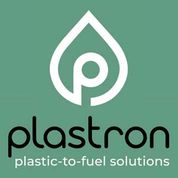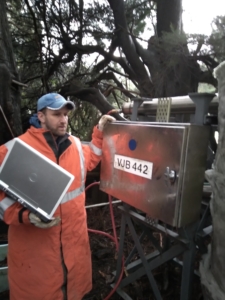
There is a solution to the global plastic pandemic . . . turn it into fuel. Todd Tulk, inventor of Plastron’s technology, says this is no pipe dream. It’s a solution available now, which can potentially eliminate plastic waste from a world that is, almost literally, drowning in it.
In this first of a series of articles on the plastic-to-fuel solution, Todd backgrounds the extent of the global plastic dilemma and introduces Plastron Solutions technology.
In 2011 my family lost its home during the catastrophic earthquakes in Christchurch New Zealand.
The government announced there would be no fuel for public use, only for essential services. This concerned me, so I thought I’d make my own. I had a basic understanding of pyrolysis (a process using heat to chemically break down material into other forms), so I did some research, and built a pyrolysis machine that turns plastic into fuel.
The process has taken me 10 years; during which I’ve developed a substantial understanding of plastic waste and the damage it’s doing to the planet, and everything that lives on it, including us humans.
The plastic problem seems overwhelming. However, we’ve created the problem so we can fix it. There’s a way to recycle more than the paltry nine percent of plastic waste that is our current global performance.
A key solution will be plastic-to-fuel pyrolysis. It’s available now, can revolutionise the industry and help restore our degrading environment.
My company, Plastron Solutions (https://plastronsolutions.com/) has developed a system that turns plastic waste into fuel. Efficient at low temperatures, requiring a comparatively small installation investment, and with a low environmental impact, our technology is positioned to help eliminate plastic waste. That’s no small claim, but I make it in all seriousness.
We are currently manufacturing more than 300 million tons of plastic each year. In 2017, US scientists calculated the total amount of plastic in existence was around 8.3 billion tons; and we add a minimum of 300 million tons to that every year! It’s estimated it takes up to six percent of annual crude oil production to produce that volume of plastic; by 2050 the volume of plastic produced will double to about 750 million tons annually.
People often think that recycling is a solution, and it partly is, with a very big ‘but’. . . 91% of all plastic goes to landfill or into the oceans. It’s estimated there will be 12 billion tons of plastic waste in our environment by 2050. For example: we humans use 500 billion single-use plastic bags every year!
Plastic debris is found in all marine environments from coastlines to open oceans, from the sea surface to the sea floor. Some 80% of marine chemical poisoning comes from plastic waste; 60% of marine turtles and 90% of pelagic birds are contaminated with plastic, causing some of them die from choking, bowel perforation or starvation.
Ocean plastic pollution is increasing exponentially compared with the volume of surrounding water. It’s now estimated to cover an area of 1.6 million square kilometers – almost as large as Queensland, Australia, and that’s only what’s floating! A huge proportion of plastic eventually sinks or becomes suspended in water layers below the surface. One of the most alarming predictions about plastic rubbish in the oceans is that by 2050 it will outweigh the combined weight of all fish life!
It’s not just the environment that suffers. The impact on human health is only beginning to be understood. Microplastics entering the human body via direct exposures, through ingestion or inhalation, can lead to an array of health impacts, including cancer, cardiovascular diseases, inflammatory bowel disease, diabetes, rheumatoid arthritis, chronic inflammation, auto-immune conditions, neuro-degenerative diseases, infertility and stroke.
We’ve got to solve this problem and it’s very easy to point the finger at the plastic manufacturer, but what’s it going be replaced with? Currently plastic is essential in many industries. Look at the car you drive, a massive percentage of that vehicle is made of plastic, including engine parts, because it is cheap and effective. How do we solve that?
While some global industries are looking at how we might replace plastic, a more immediate solution is to look at how we process plastic after it has reached the end of its use. Clearly recycling is not enough!
We need to manage plastic better. I believe that this is where the plastic-to-fuel option is poised to make a landmark difference.
Plastron’s plastic-to-fuel technology works with all plastics, our machinery can be installed at any scale from small community applications to plants that take the waste of a major metropolis. It’s a perfect solution, for example, for small Pacific Nations whose coasts are burdened by the washup of plastic sourced from countries thousands of kilometers away and for whom imported fuel is expensive.
The impact on the environment of the Plastron process is negligible and the solution it offers to resolving environmental damage from plastic has enormous potential. It also creates an important alternative source of fuel.
In future articles I will delve more into the Plastron solution, how it works, its economics, and how it can be scaled up or down for the needs of any community or industry.


